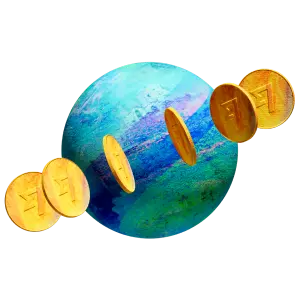캐나다 달러 (CAD)
캐나다 달러는 캐나다 공식 통화이며, 세계 5위 준비 통화입니다. 캐나다 달러 통화 코드는 CAD이고 통화 기호는 $입니다. 이 통화는 Bank of Canada에서 발행하며 오타와에 있는 Canadian Bank Note Company에서 인쇄합니다. 캐나다 달러는 명목 화폐입니다.
통화명
캐나다 달러
통화 기호
C$
CAD 환율
| USD | INR | EUR | GBP | PKR | AUD | CNY | PHP | |
|---|---|---|---|---|---|---|---|---|
| 소스 통화\: CAD | 0.69370 | 59.45930 | 0.66995 | 0.55538 | 193.12500 | 1.11590 | 5.06361 | 40.12240 |
| 대상 통화\: CAD | 1.44155 | 0.01682 | 1.49265 | 1.80057 | 0.00518 | 0.89614 | 0.19749 | 0.02492 |
불공정한 환율에 주의하세요.종종 은행과 기존의 공급업체는 실제 환율보다 높게 표시하여, 추가적인 수수료를 부과합니다. 스마트한 기술을 갖춘 Wise는 언제든 훨씬 더 효율적이고, 더 좋은 환율을 제공합니다.
| 이름 | 캐나다 달러 (CAD) |
|---|---|
| Symbol | C$ |
| Minor Unit | Cent (1/100 of a Dollar) |
| Minor Unit Symbol | ¢ |
| Notes Freq Used | $5, $10, $20, $50, $100 |
| Coins Freq Used | 1¢, 5¢, 10¢, 25¢, $1, $2 |
| Central Bank | Bank of Canada |
| 사용자 | 캐나다 |
Facts Table for 캐나다 달러 (CAD)
The CAD ranks fifth among the most actively traded currencies in the Forex market, attracting significant interest from both institutions and individuals. Commonly nicknamed the Loonie, Buck, Huard, and Piastre (in French), the Canadian Dollar holds the status of a reserve currency within several central banks. Its recognition as a commodity currency stems from Canada's significant exports of raw materials.
Cultural Symbolism
Adorned with national icons and significant imagery, Canadian banknotes portray the nation's natural beauty, historic figures, and indigenous heritage. Each note tells a story, reflecting Canada's diverse cultural tapestry and natural landscapes.
Oversight by the Bank of Canada
The stability and value of the Canadian Dollar are overseen by the Bank of Canada. The advent of currency in Canada traces back to the early 1660s, when French settlers arrived, introducing coins to the region. The initial issuance of banknotes occurred in 1821 through the Montreal Bank, swiftly gaining prominence as a primary mode of transaction.
In 1841, as the Province of Canada under British rule, a currency known as the Canadian Pound was introduced. However, by 1858, the Canadian Dollar replaced the Pound, aligning its value with the US Dollar. During this transition, both US Dollars and British Gold Sovereigns were accepted as legal tender within Canada's boundaries.
Following Canadian Confederation, the government initiated the decimalization of the currency, issuing a new set of coins in the Dominion of Canada. The establishment of the Bank of Canada in 1934 marked the inception of banknotes, introduced a year later. Notably, the inaugural Loonie coin entered circulation in 1987, followed by the introduction of the two-dollar coin, commonly referred to as the Toonie, in 1996. A significant development occurred in 2011 when the Central Bank of Canada launched a novel series of banknotes printed on polymer material.
